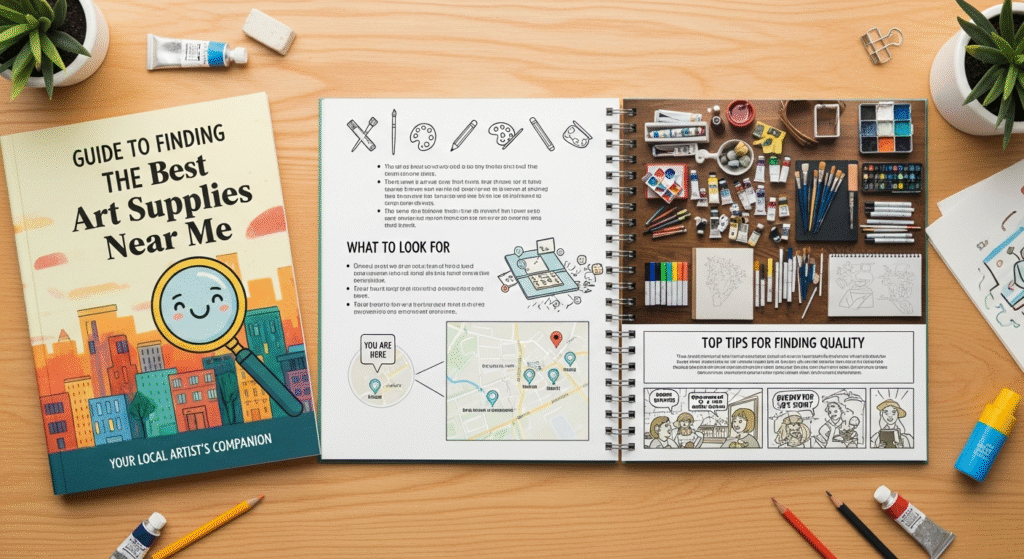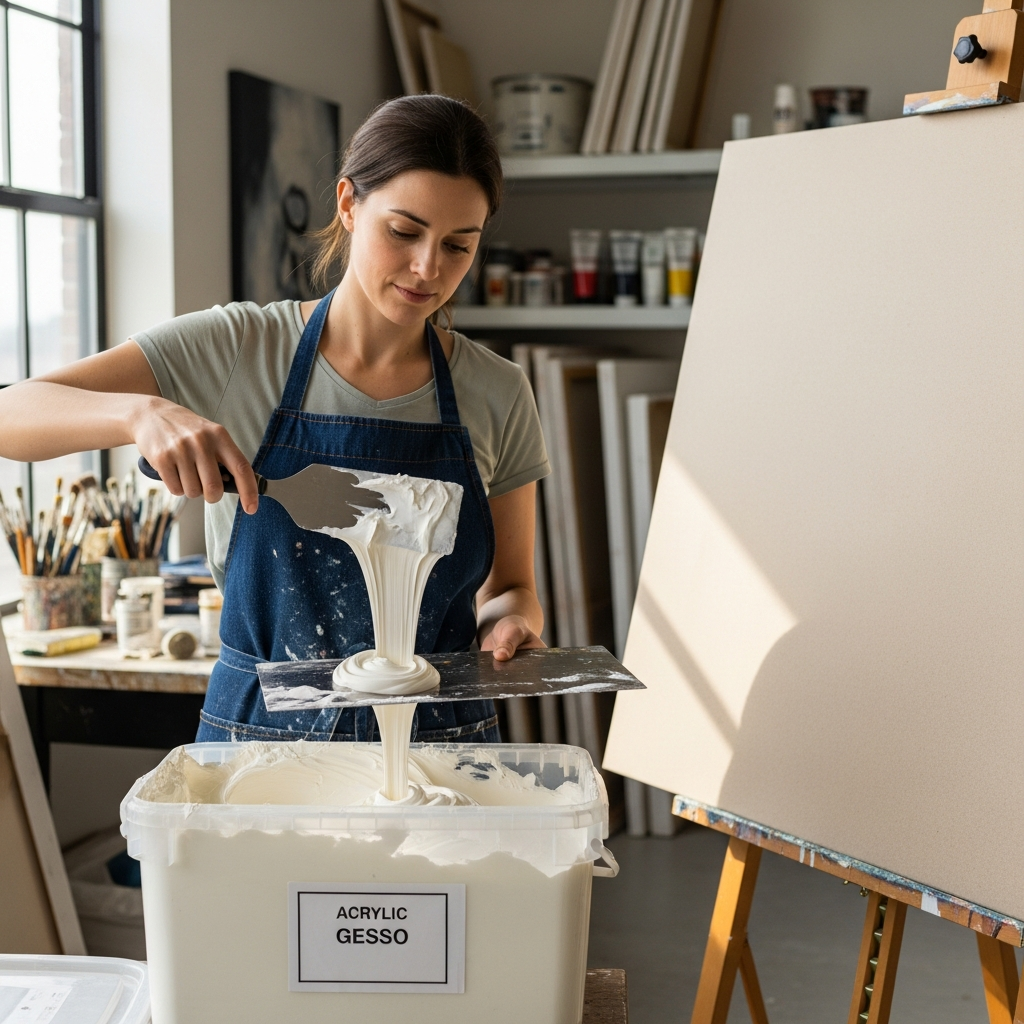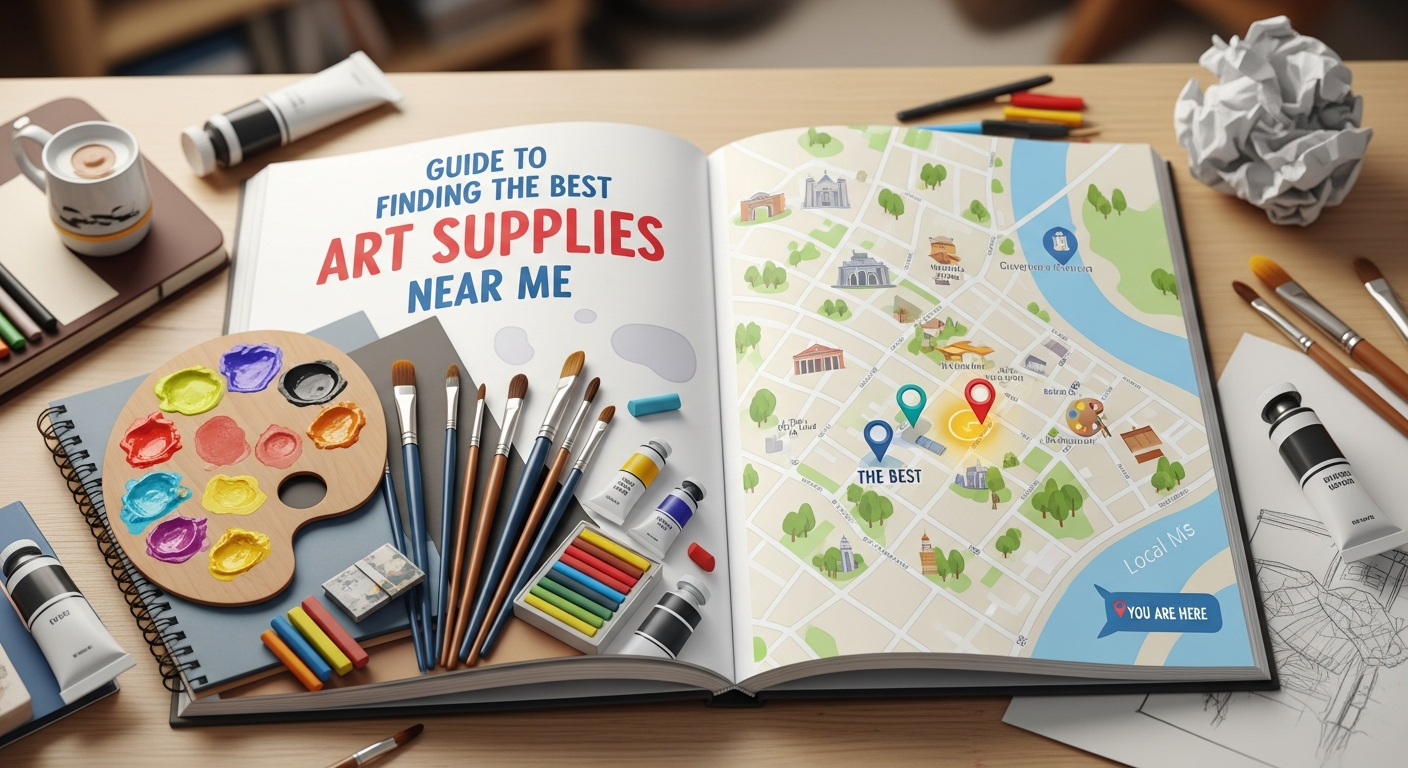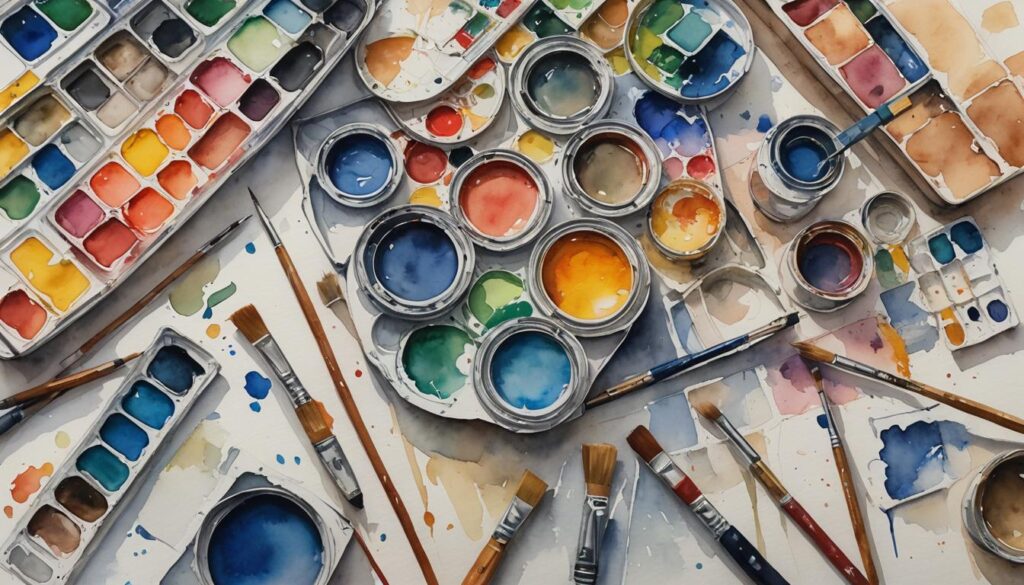When you’re an artist — whether you’re just starting out or have been creating for years — the search for the right art supplies near me is more important than just finding the closest store. It’s about being smart, planning like a business owner, and choosing materials that make your artwork look better and last longer. You shouldn’t just see your paints and paper as things you use up, but as a crucial investment in your final masterpiece.
By thinking strategically about where and how you buy, you can save money in the long run and make sure your art stands the test of time. Finding the right art supplies nearby is really about finding the right supply chain for your creative career.

Key Point Summary
| Quick Takeaway | |
|---|---|
| Quality vs. Cost | Buying “Artist Grade” costs more upfront but saves money later because the colors are stronger and you use less paint. |
| Sourcing Channels | Local Shops offer expertise; Big Box Stores offer convenience; Online Retailers offer the best price and selection. |
| Archival Security | Always look for the ACMI AP seal to ensure materials are safe and your artwork won’t fade or yellow over time. |
| Framing | Framing is a huge part of the investment! Treat it as a protective measure, not just decoration. |
Art Supplies Near Me: Understanding the Retail Landscape
If the search fails – try again as the API may be busy!
Find Art & Craft Supplies near Me
Or enter a location:
When you look for art supplies, you typically have three main choices, and each one has big pros and cons. Understanding these channels is the first step in strategic sourcing (that’s a fancy term for smart shopping!).
1. Local Specialty Retailers (The Experts)
These are the mom-and-pop shops or smaller chains that are dedicated only to art.
- Pros: They have the best expertise. The people working there are often artists themselves. They can give you amazing advice on choosing the best oil paints for beginners or show you the difference between various types of paper. They offer that personal touch.
- Cons: Prices are often higher, and their inventory might be smaller, meaning they might not have that specific shade of cadmium you need.
- Strategy: Go here for advice, unique tools, or a quick emergency purchase.
2. Big-Box Stores (The Convenient Choice)
Think of large national chain stores that sell everything from crafting materials to picture frames.
- Pros: They are super convenient and often closer to where you live (making them genuinely “art supplies near me”). They have great sales and can be good for basic, student-grade materials like sketch pads or inexpensive brushes.
- Cons: The staff usually doesn’t have deep art knowledge, and the product quality is often lower, primarily focusing on student-grade or hobbyist materials.
- Strategy: Best for low-stakes, high-volume items, like glue, foam board, or basic canvases (but be careful to always check your materials, even here!).
3. Online Wholesalers (The Money Saver)
These websites ship materials straight to your door from large warehouses.
- Pros: They offer the largest selection and the lowest prices. You can easily compare prices on everything from gesso to the perfect watercolor set. This is crucial when you are trying to save money on art supplies
- Cons: You can’t see, touch, or test the materials before buying, and shipping costs can add up if you don’t buy enough at once. You also have to wait for delivery.
- Strategy: Use these for stocking up on expensive items like professional paint tubes or bulk must-have supplies for plein air painting once you know exactly what you want.

“Choosing where to source your materials is the biggest decision an artist makes before they even put brush to canvas. It determines the lifespan and, crucially, the commercial viability of their entire body of work.”
Decoding Material Quality: Investment vs. Expense
One of the most valuable lessons for any artist is learning the difference between student-grade and artist-grade materials. This is key to understanding pigment load and tinting strength and making smart economic choices
Student Grade vs. Artist Grade
| Feature | Student Grade | Artist Grade (Professional) | Why It Matters |
|---|---|---|---|
| Pigment Load | Low (More filler/binder) | High (Pure color) | Tinting Strength: Professional colors are so rich, they mix better and go further. You use less paint overall. |
| Lightfastness | Variable, can fade | High (Will last 100+ years) | Archival Quality: Ensures your artwork doesn’t fade when hung in a gallery or customer’s home. |
| Cost | Low initial cost | High initial cost | True Value: The professional paint often costs less per finished painting because you use so little. |
The Archival Mindset: Making Art That Lasts
You want your art to be around for a long, long time. This is where the archival quality vs student grade materials debate truly matters. When a material is “archival,” it means it won’t break down, turn yellow, or fade easily.
Safety First: The ACMI Seal
Before you even worry about fading, you must worry about safety. Certain pigments and solvents can be toxic. When you look for art supplies near me, always check for the ACMI AP (Approved Product) Seal from the Arts & Creative Materials Institute. This seal tells you the product is non-toxic and safe for use.
It is especially important when dealing with materials like solvents, metal-based pigments (like Cadmiums), or fixatives. Learn how to handle and store safely using toxic art materials to protect yourself and your studio space.
The True Meaning of Archival
Archival doesn’t just mean your paint won’t fade; it also applies to how you present and protect your work. The materials touching your final artwork are crucial:
- Framing: When framing your art, use acid-free mats and backing boards. Acid is the enemy of paper and canvas, causing it to yellow and deteriorate over time
- Framing choices, whether you go to a shop like Michaels Custom Framing or an online service like Framebridge, directly impact longevity.
- Varnish/Fixative: Applying a final protective layer is essential. A good varnish protects the paint layer from dirt, dust, and UV light damage. This is the final step in securing your investment.
Strategic Sourcing: Bulk Buying and Budget Tips
Being smart about art supplies means knowing when to buy in small amounts (for testing) and when to buy in bulk (for production).
When to Buy in Bulk
You should always buy non-perishable, high-use items in bulk, especially from online wholesalers, to maximize savings.
- Canvases and Surfaces: If you use a lot of small canvases, stock up!
- Gesso and Primers: These are used constantly, and buying a large tub is always cheaper than multiple small containers. You can even read our guide on the essential guide to gesso and primers.
- Your Favorite Colors: Do you use a ton of Titanium White? Buy the giant tube.
Savvy Shopping Techniques

Ready to become a master budget artist? Use these savvy shopping techniques to maximize your savings when sourcing the best art supplies near me or online.
- Student Discounts: If you are a student, always ask. Many professional art stores offer 10–20% off with a valid student ID.
- Coupons and Email Lists: Big-box stores and online retailers often send out 40% or 50% off coupons. Wait for these sales before making large purchases.
- Creative Substitutes: Before buying a specialty medium, check if you can use a cheaper, equally effective alternative.
Expanding Your Artistic Horizons
Once you’ve mastered the art of sourcing materials, the next step is applying that knowledge to different techniques and styles. Your materials will influence your technique, so choose wisely!
- Paints: Are you curious about the differences between different painting types? Check out our article on watercolors vs acrylics: a comparison.
- Brushes: Don’t neglect your tools. A great brush can last decades if cared for properly. Read our guide on choosing the right paint brushes.
- Color Theory: Understanding how colors interact is just as important as the quality of your pigments. Dive into mastering color mixing theory.
- Canvases: For a true understanding of the art surface, you might want to try how to stretch your own canvas-diy.
- Oil Painting: If you are tackling this medium, a solid starting point is best oil paints for beginners.

FAQs:
Finding the perfect art supplies near me often leads to other questions. Here are the answers to some common searches:
- What are the best art supplies for beginners?
- Answer: Beginners should start with student-grade acrylics or watercolors, a basic set of three or four synthetic brushes, and a sketch pad. This allows you to learn techniques without the high cost of professional materials.
- Is it better to buy art supplies online or in a store?
- Answer: For the best selection and price, online is better for bulk or professional items. However, physical stores are better if you need something immediately or want advice from an expert you can talk to directly
- What is the difference between academic and archival art supplies?
- Answer: “Academic” usually means student-grade, often lower quality, and intended for practice. “Archival” means the material is permanent, acid-free, and lightfast—designed to last for a century or more without degradation.
- What supplies do I need to start sketching?
- Answer: All you need is a graphite pencil set (H, HB, 2B, 4B) and a good quality sketch paper (like bristol or drawing paper). A kneaded eraser is also essential for lifting graphite without damaging the paper.
Citations:
Here are the external resources and studies that informed this guide on sourcing the best art supplies near me:
- Online vs. Physical Stores: What’s your pick and why?
- Tips When Buying Art Supplies Online
- Artist Grade vs. Student Grade: Art Economics – Opus Art Supplies
- 10 Tips to Save Money on Art Supplies – Lori McNee – Fine Art & Tips
- Are Your Art Supplies Toxic? Look for the ACMI Seal
- Fine Art Printing
- Michaels Custom Framing | Custom Frames, Photo Prints & More
- Framebridge: Custom Picture Framing Online & In Retail Stores



